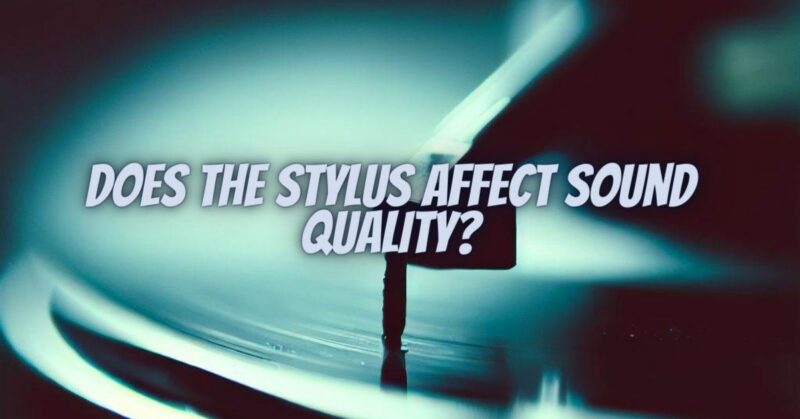The stylus, also known as the needle, is a tiny but critical component in any turntable setup. This small piece of precision engineering is responsible for tracking the grooves of your vinyl records, translating the physical contours into the music you hear. Many audiophiles and vinyl enthusiasts wonder: Does the stylus truly affect sound quality? In this comprehensive article, we will delve into the role of the stylus, its impact on sound quality, and how selecting the right stylus can elevate your vinyl listening experience.
The Stylus’s Role in Vinyl Playback
To understand the stylus’s influence on sound quality, it’s essential to grasp its role in the vinyl playback process:
- Tracking the Grooves: The stylus is affixed to the tonearm and delicately traces the grooves of your vinyl records. Its tracking ability directly affects how accurately it follows these grooves.
- Translating Mechanical Motion: As the stylus moves within the grooves, it vibrates in response to the undulations of the groove walls. This mechanical motion is then converted into an electrical signal by the cartridge, which is ultimately amplified and transformed into audible sound.
Impact of Stylus Shape:
One of the most significant factors influencing sound quality is the shape of the stylus tip. Different shapes offer varying degrees of contact with the groove walls and, subsequently, different levels of accuracy and detail in sound reproduction. Common stylus shapes include spherical, elliptical, Shibata, and line contact, each with its own characteristics:
- Spherical Stylus: Spherical styli have a rounded tip that contacts the groove walls evenly. They are known for their durability and gentle tracking, making them suitable for general listening. However, they may lack the detail retrieval of more advanced shapes.
- Elliptical Stylus: Elliptical styli feature an oval-shaped tip that provides improved contact with the groove walls. This shape enhances tracking accuracy and can result in better detail and clarity in audio reproduction.
- Advanced Stylus Shapes: Shapes like Shibata and line contact offer even narrower and more precise contact points. They excel at tracking high-frequency details and complex passages, making them preferred choices among audiophiles.
Stylus Condition and Maintenance:
The condition of the stylus is also crucial for sound quality. A well-maintained stylus ensures accurate tracking and minimizes distortion and wear on your records. Regular cleaning and inspection are essential to preserve sound quality and extend the stylus’s lifespan.
Matching Stylus to Cartridge:
Selecting the right stylus should also consider compatibility with the cartridge. Cartridge and stylus combinations must work harmoniously to achieve optimal sound quality. It’s advisable to follow the manufacturer’s recommendations or consult with a specialist when replacing or upgrading your stylus.
The stylus indeed plays a pivotal role in influencing sound quality in vinyl playback. Its shape, condition, and compatibility with the cartridge all contribute to the accuracy, detail, and fidelity of audio reproduction. While the impact of the stylus is just one aspect of the vinyl listening experience, selecting the right stylus for your setup can elevate your enjoyment of vinyl records, bringing out nuances and subtleties that make vinyl a cherished format among music enthusiasts. Proper care and maintenance of your stylus are essential to preserving both sound quality and the longevity of your vinyl collection.


